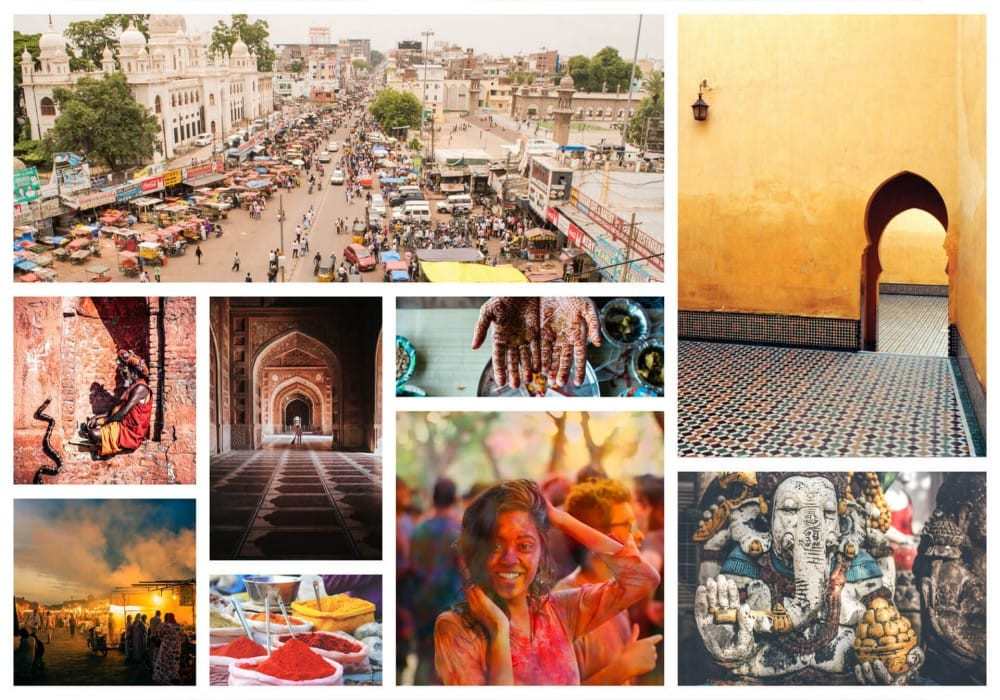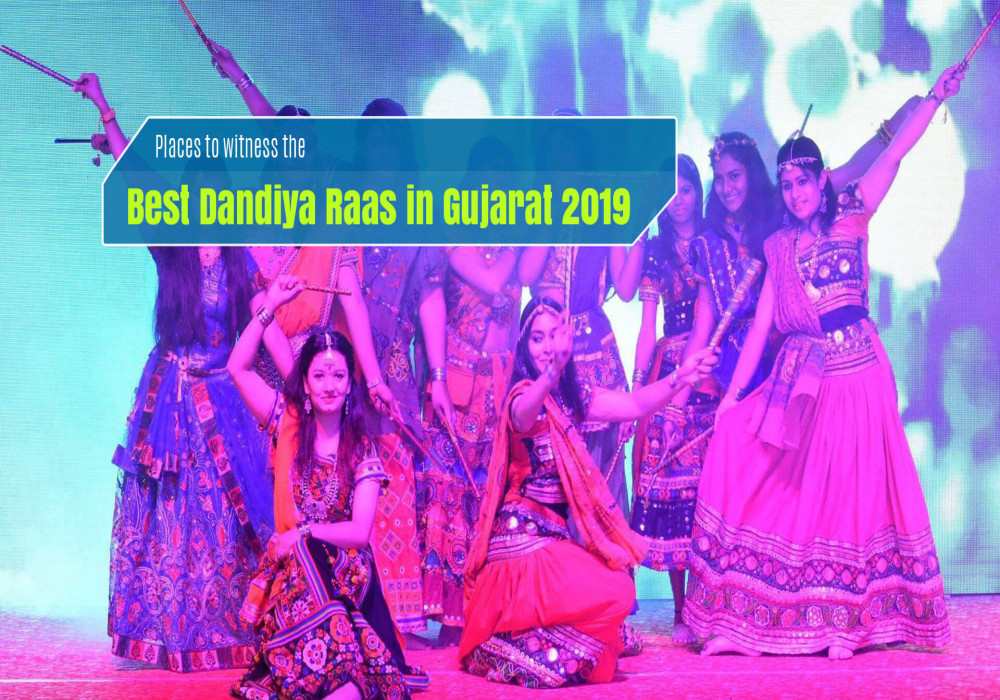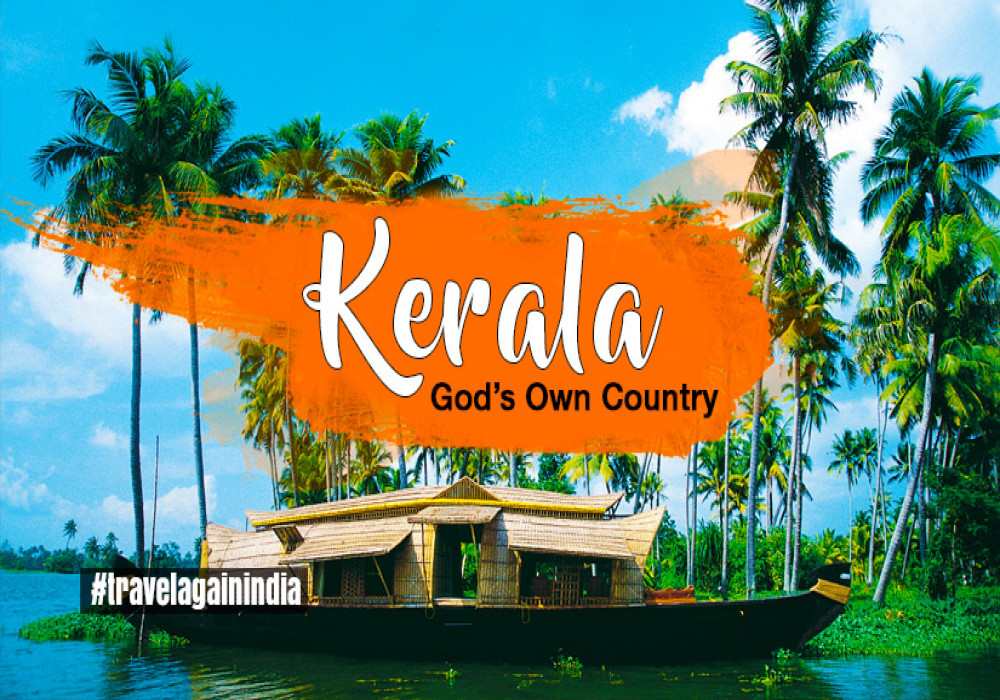
Last Updated At: 21-Feb-2023
Top 17 Temples of Himachal Pradesh
The Land of Gods, Himachal Pradesh is famous for many significant temples in India. Also famous as Dev Bhoomi, it indeed is a little piece of heaven where Gods chose to reside. This sacred land is a shelter for many celestial beings and has an intriguing mythical past.
One of the most significant mythological fables that are attached to many temples says that grief-stricken Lord Shiva was performing Tandava by carrying the corpse of his beloved, Goddess Sati. In order to stop the destruction, Lord Vishnu emerged and slashed Sati’s body in 51 parts and a few parts of her body fell at various places of Dev Bhumi. These places are famous as Shaktipeeths and hold strong religious significance in Hindu culture.
These sacred shrines behold beauty from ancient times that attracts pilgrims from all over the world. If you wish to seek spiritual awakening, a Temple tour to Himachal Pradesh would pave your path for the most profound journey of a lifetime.
Adotrip would take you closer to your spiritual self and enlighten you with mythical and engrossing stories of the most revered temples in Himachal Pradesh!
1. Deotsidh Temples
Located in the Hamirpur District of Himachal Pradesh, Deotsidh temple is a cave temple. The temple is dedicated to a famous Sage, Baba Balak Nath, who is believed to have meditated here. He was a popular spiritual reformer who is known for his contribution to the Shakti Movement. His acts of philanthropy are remembered to date. This lovely cave temple, nestled amidst verdant, undulating landscape, is inaccessible. It is possible to see the deity only from a raised platform constructed right in front of the temple. It is one of the most famous temples in Himachal Pradesh that attracts many devotees and visitors, especially on Sundays, and offers rota to the deity. It is an Indian flour-based sweet. Special occasions like Navratra and Holi attract huge crowds to the temple. Visitors also love enjoying a thrilling cable car ride to Shah Talai, which starts from a short distance from the temple. When visiting this area, do make it a point to visit this temple and seek the blessings of the sage.
2. Baglamukhi Temple
One of the most popular Devi temples in Himachal Pradesh, the Baglamukhi temple, is a Siddha Peeth. It is located approximately 30 km away from the Kangra District and attracts Hindu devotees in large numbers. Two other temples located in the vicinity of this temple are Chintapurni Temple and Jwala Ji. Both temples are renowned in the area. The temple dedicated to Baglamukhi Devi has a lot of religious and spiritual significance. Baglamukhi Devi is considered as one of the ten Mahavidyas, the Devi who destroys the evil. The unique aspect of this temple is its yellow-colored façade. It is believed that yellow is the favorite color of Devi. Hence all walls and interiors of the temple are painted in yellow color. Moreover, this color is also considered very auspicious. Devotees coming to the temple to seek the blessings of the Goddess wear yellow clothes and offer yellow sweets like Besan Ke Laddu.
3. Mata Shri Bajreshwari Devi Temple
The temple of Goddess Bajreshwari Devi is located in the heart of Kangra town. Devi Brajeshwari is considered the incarnation of Goddess Durga. As the legend goes, this temple came into existence when Pandavas came to this area during the Mahabharata era. Pandavas are believed to have paid their respect to the deity and built a temple in her honor. Over the centuries, the temple was plundered several times as stories of its riches and fame were widespread. In 1009 AD, Mahmud of Ghazni carried away many valuables, gold, diamonds, etc., donated by the devotees over the Khyber Pass. This temple has witnessed many invasions, and every time it was invaded, it was rebuilt and restored to its past glory. It is a beautiful temple with amazing architectural features.
4. Jwala Devi Temple
Jwala Devi Temple is another very popular Devi Temple in Himachal Pradesh. One of the most striking features of this temple is the eternal flame burning in a hollow rock for thousands of years. It is believed that this flame burns due to the presence of natural gas in the rock. This hollow rock is considered the manifestation of Goddess Jwala Ji. Navratri in March-April and September-October see throngs of devotees visiting the temple to seek blessings from the deity. A gold-colored dome is built over the Garbhgriha or the sanctum sanctorum to protect the natural flame burning relentlessly. The temple is approximately 35 km from Kangra and 55 km from Dharamshala.
5. Bhimakali Temple
Located in Sarahan, Shimla, the Bhimkali Temple commemorates the all-powerful manifestation of the Goddess Bhimkali. This temple is multi-storeyed and has a twin temple complex which is styled like a hill fortress. Its architectural features make it stand apart from other temples in the area. The temple is located on high ground, commanding majestic views of towering peaks covered in snow. The entire area is blanketed in emerald green, making it a very scenic and attractive place. This temple attracts a lot of pilgrims and devotees every year. The Goddess Bhimkali is considered the destroyer of evil and Kuldevi or the patronizing deity of the Bushair princely state. During Navratri, fairs are held close to the temple that attracts a lot of visitors.
6. Laxmi Narayan Temple
Nestled amidst the serene valleys of Chamba is a beautiful temple dedicated to Lord Laxmi Narayan, the manifestation of Lord Vishnu. Raja Sahil Verman built the temple in the 10th Century. This main shrine in Chamba has a lovely Garbhgriha, Shikhara or Bimana, mandapa, and an antarala. Wooden Chattris and the shell roof of the temple keep it safe and protected against rains and snowfall. The metallic image of the mount of Lord Vishnu, Garuda, is one of the striking features of the temple. The architectural and historical significance of the temple has made it quite popular among discerning visitors to Himachal Pradesh. There are six temples on the premises dedicated to Lord Shiva and Lord Vishnu. The temple opens from 6 am to 12:30 pm and from 2:30 pm to 8:30 pm.
7. Chaurasi Temple
The famous Chaurasi Temple is located in the heart of Bharmaur Town. It is a 7th Century temple. The complex has 84 temples dedicated to 84 siddhis and yogis. An ornate and opulent structure decorates the entrance to the temple complex. The temple is dedicated to Lord Mani Mahesh, an incarnation of Lord Shiva. Another temple in the complex that attracts huge crowds is dedicated to Goddess Lakshana Devi. Devotees believe that their pilgrimage to Lake Manimahesh is incomplete a visit to the famous Chaurasi Temple, located approximately 65 km from Chamba.
8. Baijnath Temple
This Shiva temple in Himachal Pradesh is an absolute architectural gem. Made up of stone, the temple was rebuilt by two merchants at the existing temple site in 1204 AD. The temple is styled in Shikhara style with a divine linga residing inside. It is one of the twelve jyotirlingas in the country. As the legend goes, the King of Lanka, Ravana, was an ardent devotee of Lord Shiva meditated at Baijnath. The temple witnesses crowds of devotees during Shivratri when the temple is decorated with garlands of fresh flowers. A Shivratri fair is also organized at this time, a major attraction for the visitors and devotees.
9. Maa Chintpurni Temple
This majestic Chintapurni temple is a major pilgrimage center and one of the Shaktipeeths in India that is located in the Una district, Himachal Pradesh. According to mythology, Lord Shiva carried the corpse of Sati and as he was wandering around in sorrow, the parts of Sati’s body fell at different places and these places were named Shaktipeeths. It is believed that it was at this place where Sati’s feet fell and since then a large number of devotees from different parts of India turn up to worship at the lotus feet of Maa Chintpurni. Legends state that this pilgrimage came into being after the goddess revealed herself to Pandit Mai Dass, who was a dedicated devotee. Mai Dass built the temple around Devi's Pindi. Another fable attached to this religious site is that the Goddess sacrificed and chopped off her head to appease the bloodthirst of her companion. Maa Chintapurni also symbolizes self-sacrifice, as she sacrificed her head to serve her beloved.
10. Jwalamukhi Temple
Jwalamukhi Temple is situated in Jwalamukhi town, 35 km south of Kangra valley in Himachal Pradesh. The revered shrine is dedicated to Jwalamukhi - the Flaming Goddess who is also known as the Goddess of Light. According to mythology, Sati’s tongue fell off the corpse at this site. The sacred temple was built by Raja Bhumi Chand Katoch of Kangra, who was a great devotee of Goddess Durga after he dreamt about this place. The dome of the temple is made of gold and the door is made out of silver plates. The great Mughal Emperor, Akbar visited the temple after hearing about perpetually burning flame. After relentlessly trying to douse the flame with a stream of water, Akbar gave up and bow to the prowess of Jwala Mai. He offered a gold umbrella that is known as chhatra but it turned into copper as Goddess declined his offering. After this incident, Akbar became the greatest devotee of the Goddess and even today the stream of water drips into a tank within the temple complex.
11. Shri Naina Devi Ji Temple
Shri Naina Devi Ji Temple is amongst the holiest places of worship in Himachal Pradesh. It’s one of the 51 Shaktipeeths, which is located in Bilaspur district. This sacred shrine is devoted to Naina Devi who is considered as an avatar of Goddess Durga. In keeping with legends, this holy shrine is constructed in a very place where one eye of Sati Devi fell when Lord Vishnu ripped her body into 51 pieces so as to pacify angry Lord Shiva. Naina Devi temple was built by Raja Bir Chand in the 8th century. It’s perched upon a hillock, which is now connected by a ropeway. This topographic point is visited by a large number of pilgrims and devotees around the year and particularly during Shravan Ashtami and the Navratri of Chaitra and Ashwin.
12. Chamunda Devi Temple
Chamundadevi Temple is the abode of Goddess Chamunda Devi is located at the bank of Ban Ganga river that is 10kms away from Palampur in the Kangra district of Himachal Pradesh. Chamunda Devi is considered the Mother Goddess and is held with utmost faith not only by the locals of Himachal but also by devotees from all over India. According to the legend, Chamunda Devi emerged from an eyebrow of Goddess Durga when demon kings Shumbha and Nishumbha tried to catch hold of her. She got so furious that out of rage that she killed both the demons at this very spot where the temple was built. She also killed Chand and Munda in a fierce battle. The significant sacred temple of Himachal also houses a bathing ghat where devotees take a holy dip. The idol in the main temple is concealed beneath a red cloth and devotees are not allowed to touch the sacred idol of Maa Chamunda. Though, Chamunda Devi is the wrathful form of Maa Durga however she is considered as the Mother Goddess and is held with utmost faith not only by the locals of Himachal but also by devotees from all over India.
13. Tara Devi Temple
This holistic shrine is devoted to Goddess Tara Devi that is located on the western side of Shimla within the enchanting hills of Tarav Parvat. The glorious Himalayas at the backdrop and enchanting view of the valley adds to the charm of visiting Tara Devi Temple. Dated back to 250 years old, the temple complex was housed with a wooden idol of Goddess Tara Devi. Later when the temple was shifted to its present location, the wooden idol got replaced with an idol that is made with a rare combination of eight elements. One can spend some time here to appease one’s senses and revitalize one’s soul. During the festive seasons, the temple complex is thronged with an enormous number of devotees while during normal days, it’s extremely calm and placid.
14. Jakhoo Temple
Jakhoo temple is one of the famous temples from ancient times That is situated in the heart of Himachal Pradesh, Shimla. This holistic shrine is dedicated to the Hindu Lord Hanuman. It is situated at a height of 8500ft and its giant Hanuman statue makes an important landmark of the town. Each year a festival is held in Dussehra. This temple holds special significance as it is said that when Lord Hanuman went in search of Sanjivni Booti to revive Lakshman, he took a halt at this location where later the temple was built. The temple is easily accessible by foot, pony, taxi, or ropeway.
15. Sankat Mochan Temple
Located at an altitude of 1,975m, this heavenly abode of Lord Hanuman lies on the Shimla-Kangra Highway. Sankat Mochan Temple is the second most visited temple of Shimla after Jakhoo Temple. With its unflappable vibes and breathtaking views, all the devotees get attracted to it. This temple was established in 1950 by the god-fearing figure, Baba Neem Karori Maharaj, who was so mesmerized by the wonders of Shimla that he spent 10 days within the forest and decided to determine a Hindu shrine. The temple is named after Lord Hanuman, however, idols of Lord Ram, Shiva, and Ganesh are also placed alongside. Splendid architecture, majestic view, and divine aura are major attractions of the temple that allures pilgrims and also tourists.
16. Hadimba Temple
Hadimba Devi Temple, locally called Dhungri temple lies amidst the snow-covered hills of Manali which is one of the famous hill stations of Himachal Pradesh. It’s an ancient cave shrine devoted to Hidimbi Devi, wife of Bhima, one of the five Pandava brothers of epic Mahabharata. This beautiful shrine is made with unique wooden architecture and is situated in the vicinity of a thick cedar forest, Dhungiri Van Vihar at the foot of the Himalayas. The structure of the temple was built way back in 1553 by Maharaja Bahadur Singh. Associated with the Hindu epic Mahabharata, this revered Hidimba Devi temple holds monumental importance to Hindu pilgrims. The temple is an absolute wonder not only for devotees but also for nature lovers due to its exceptional location.
17. Shri Bhima Kali Temple
Best known for its unusual architecture and wealth of wood carvings, the Shri Bhima Kali temple at Sarahan is situated at an elevation of 2150 meters and is about 180 km away from Shimla. This 800-year-old Temple is one of the most unique shrines of the amazing hill state that is dedicated to mother Goddess Bhimakali who is believed to be the presiding deity of the Rulers of former Busharh state. As per the legends, the manifestation of the goddess is marked to the Daksha-Yajna incident when the ear of Sati Devi fell at this place. Since then it became a holy shrine that is one amongst the 51 holy Pitha-Sthan of Devi. This wooden temple offers a scenic background with lofty snow-clad mountains. Not just the religious significance but also the architecture of the temple and the raveled wood carvings are worth praise.
Wrapping up our post of famous temples of Himachal Pradesh. You can plan your trip with the circuit planner tool or simply pick an exclusive holiday package from Adotrip. Grab before it’s gone! Get the best travel experience because, with us, nothing is far!
Frequently Asked Questions About Temples In Himachal Pradesh
Q1. Which are the famous temples in Himachal Pradesh?
Ans. Some of the most famous temples in Himachal Pradesh are Shri Chamunda Devi Temple, Shree Chintapurni Temple, Shri Jwala Ji, Baijnath Ji, and more.
Q2. How many temples are there in Himachal Pradesh?
Ans. Himachal Pradesh boasts twenty-one temples dedicated to different Gods and Goddesses. These temples are known for their spiritual, cultural, and architectural significance.
Q3. Which is the largest temple of Himachal Pradesh?
Ans. The Lakshana Devi Temple in Bharmour is the largest temple in Himachal Pradesh.
--- Published By Shradha Mehra
Latest Blogs

Long Weekends In India 2025 - List of Holidays

Kazakhstan Travel Guide 2025: Affordable Luxury, Visa Free E...

Think Ayodhya is Just Temples? Discover Its Hidden Artistic...

Why Azerbaijan is the Best Budget Friendly Alternative to Sw...














 Dubai
Dubai Malaysia
Malaysia USA
USA





